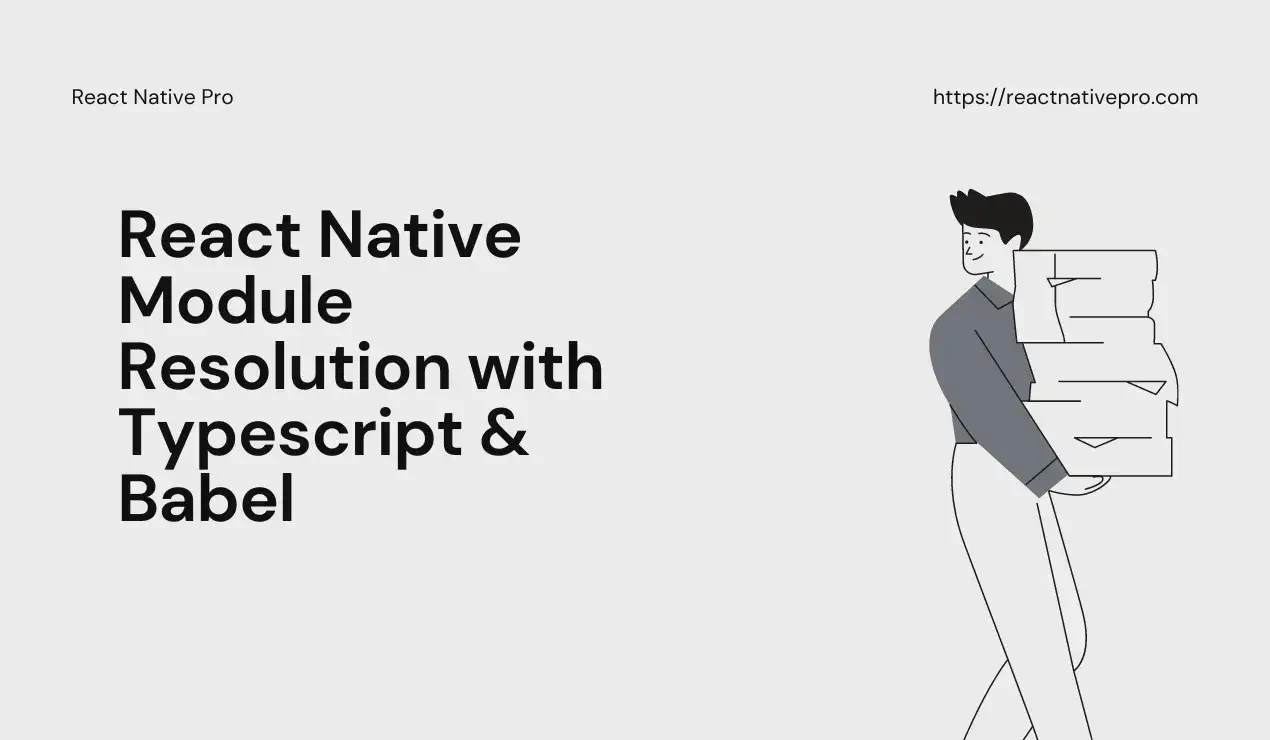React Native Module Resolution with Typescript & Babel
Posted in module-resolution, babeljs on July 21, 2023 by Hemanta Sapkota ‐ 4 min read

React Native is a popular framework for building cross-platform mobile apps. One of its key features is its module resolution system, which allows developers to easily import and use modules from different parts of their codebase. However, getting module resolution to work correctly with Typescript and Babel can be a challenge.
Introduction
In this blog post, we’ll explore how to set up Typescript and Babel with React Native and how to handle module resolution in this context.
Problems with relative imports
One common issue developers face when working with React Native, Typescript, and Babel is problems with relative imports. In a large codebase, it can be difficult to keep track of file paths and ensure that our imports are always correct.
For example, let’s say we have the following file structure:
src/
components/
Button.tsx
screens/
HomeScreen.tsx
If we want to import the Button component into our HomeScreen component, we might use a relative import:
import { Button } from '../components/Button';
This works fine, but it can become cumbersome if we have a lot of components and screens, or if we move files around in our codebase.
To avoid these issues, we can use custom module paths instead of relative paths, as described in the previous sections.
By using custom module paths, we can import modules using logical names rather than file paths, which makes our code more readable and easier to maintain.
Typescript setup with React Native
Before we can use Typescript with React Native, we need to install and configure it. We’ll also need to configure the Typescript compiler to work with our React Native project.
Babel setup with React Native
Babel is a tool that allows us to use modern Javascript features that are not yet supported by all platforms. To use it with React Native, we’ll need to install and configure it, as well as configure it to work with Typescript.
Module Resolution in React Native with Typescript & Babel
Understanding how module resolution works in React Native is crucial to getting our Typescript and Babel setup working correctly. We’ll explore how module resolution works in React Native and how to handle it when using Typescript and Babel.
Configuring babel module-resolver plugin
The babel module-resolver plugin allows us to define custom module paths in our codebase. This is useful because it allows us to import modules using logical names rather than file paths, which can make our code more readable and easier to maintain.
To configure the module-resolver plugin, we first need to install it:
npm install --save-dev babel-plugin-module-resolver
Once installed, we can add it to our Babel configuration. In our .babelrc file, we can add the following:
{
"plugins": [
["module-resolver", {
"root": ["./src"],
"alias": {
"@components": "./src/components",
"@screens": "./src/screens"
}
}]
]
}
In this example, we’re configuring the module-resolver to look for modules in the ./src directory and its subdirectories. We’re also defining two aliases - @components and @screens - that point to specific directories within ./src.
With this configuration in place, we can now import modules using our defined aliases:
import { Button } from '@components/Button';
import { HomeScreen } from '@screens/HomeScreen';
This makes our code more readable and easier to maintain, especially as our codebase grows and we begin to have a larger number of files and directories.
By configuring the module-resolver plugin, we can take advantage of its powerful module resolution capabilities to make our code more maintainable and scalable.
Configuring typescript tsconfig with paths
In addition to configuring Babel with the module-resolver plugin, we can also configure Typescript to work with custom module paths. This can be done by adding a paths property to our tsconfig.json file.
Here’s an example tsconfig.json file:
{
"compilerOptions": {
"baseUrl": ".",
"paths": {
"@components/*": ["./src/components/*"],
"@screens/*": ["./src/screens/*"]
}
}
}
In this example, we’re configuring Typescript to look for modules with the @components and @screens aliases, just like we did with the module-resolver plugin. We’re also using the baseUrl property to indicate that our module paths are relative to the project root.
With this configuration in place, we can now import modules using our defined aliases:
import { Button } from '@components/Button';
import { HomeScreen } from '@screens/HomeScreen';
By configuring both Babel and Typescript with custom module paths, we can ensure that our codebase is maintainable and scalable, even as it grows in size and complexity.
Conclusion
Using Typescript and Babel with React Native module resolution can help us write more maintainable and scalable code. By following the steps outlined in this blog post, we can get our setup up and running quickly and easily.
We hope you found this blog post useful. If you have any questions or comments, please feel free to leave them below.
comments powered by Disqus